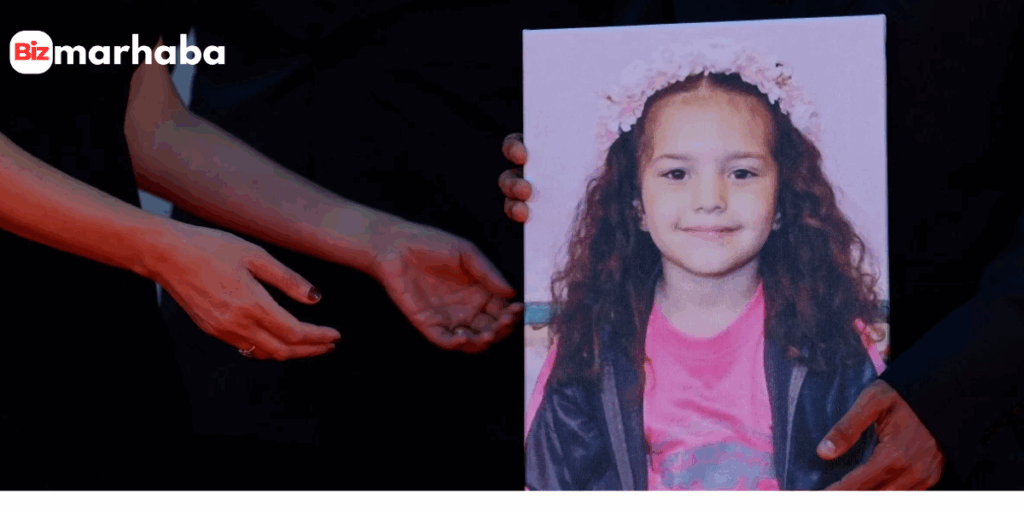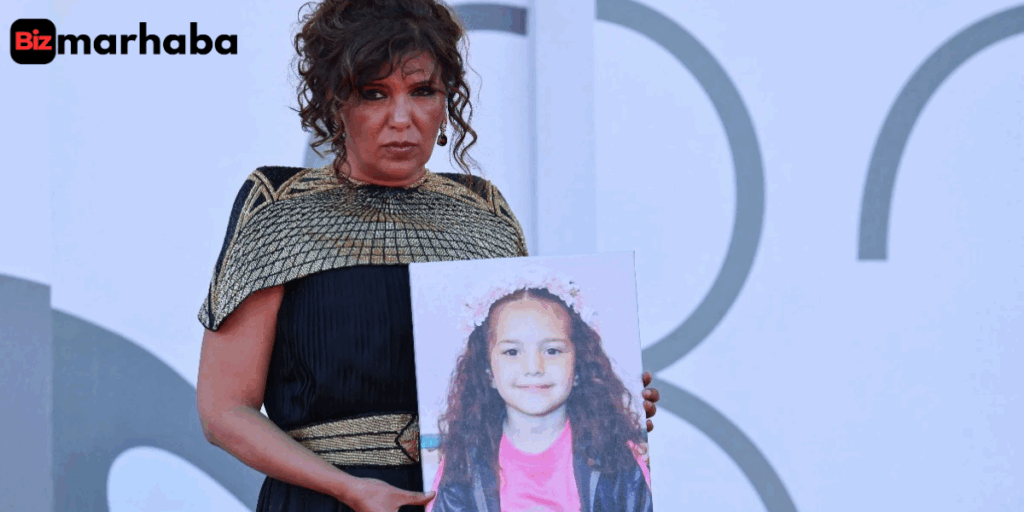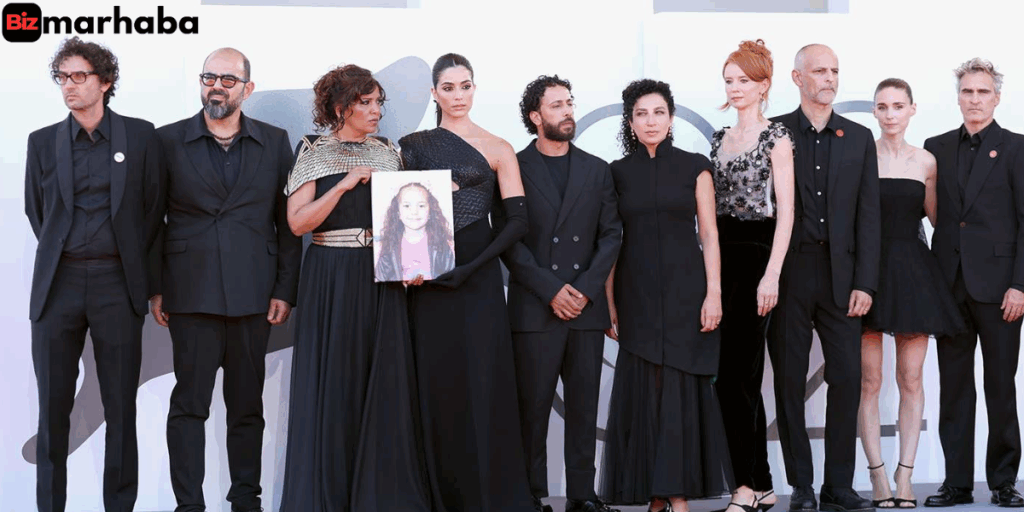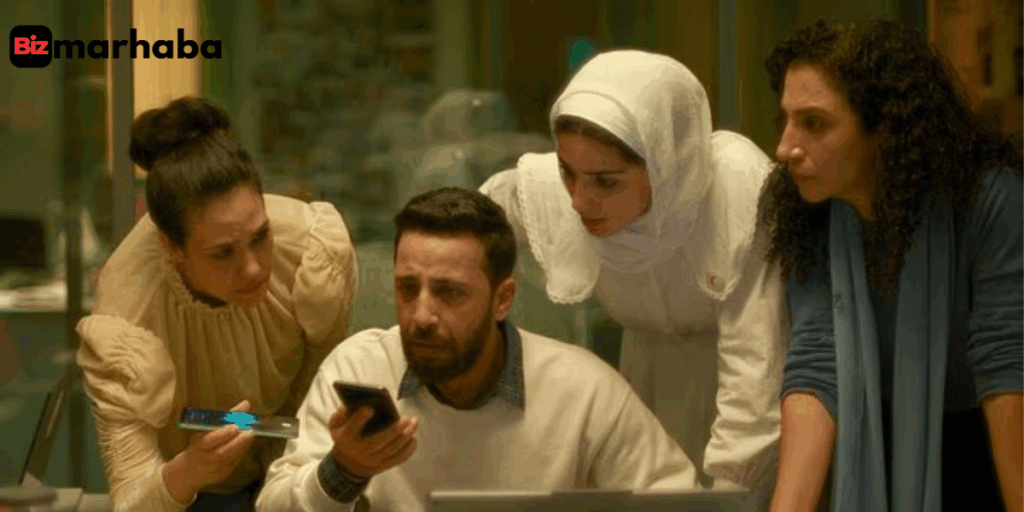The voice of Hind Rajab is something beyond a movie; it is a chilling reminder of the way war kills the most innocent voices. Based on the true story of a five-year-old Palestinian girl, the film recreates her last moments by using the desperate screams that she had made during one of the saddest calls in the world. The director does not present the violence directly but makes Hind’s voice the main character, so people cannot forget her.

What Is The Voice of Hind Rajab?
The movie retells the last day of Hind’s life. On January 29, 2024, she found herself trapped in a car surrounded by the bodies of her relatives. While terrified and alone, she dialed emergency services. Her trembling voice said, “I’m so scared, please come.” This recording later shook the world, and now it forms the emotional core of the movie.

Director Kaouther Ben Hania, already acclaimed for her socially driven works decided to adapt this true story with urgency. She had been working on another project, but after hearing Hind’s plea, she changed direction entirely. Within months, the script and production were ready. By 2025, the film was screening at Venice, an unusually fast turnaround for such a delicate subject.
How the Story Unfolds on Screen
The film is not about violent scenes, unlike other war dramas. Rather, it happens nearly in its entirety within a Red Crescent dispatch center. We listen to the phone call of Hind Rajab, and the actors play the roles of those who respond to him and desperately attempt to arrange a rescue. The real action is their feelings of frustration, fear, and helplessness.
This is a stylistic decision. The film does not reveal Hind, so the audience is left with only her shaky voice and the reaction of the responders. The break between her words seems even heavier than any special effect would generate. This restraint has been commended by critics as a great example of telling a story by not telling it.
The Venice Premiere and Global Reception
At the 2025 Venice Film Festival, The Voice of Hind Rajab stunned audiences. When the credits rolled, silence filled the room, followed by thunderous applause. The ovation lasted between 23 and 24 minutes, one of the longest in the festival’s history. Some audience members cried openly, while others chanted, “Free, free Palestine!”

The film immediately became one of the festival’s most talked-about entries. Critics described it as “soul-crushing” yet deeply necessary. For many, it was not just a movie but a call to bear witness. Its Venice success sparked conversations about a wider theatrical release, though its availability in the United States remains uncertain.
Hollywood Backing and Oscar Campaign
Among other reasons the film became visible is the impressive list of executive producers. The project had the names and influence of Brad Pitt, Joaquin Phoenix, Rooney Mara, Alfonso Cuaron, and Jonathan Glazer attached to it. Their endorsement has placed the movie as a serious awards contender.
Tunisia entered the film as its official submission in the Best International Feature Film category of the 2026 Academy Awards. It will also be screened at the Toronto International Film Festival, which provides the film with an international critical and audience platform. With the same momentum, the film may be one of the most memorable Oscar nominees of the decade.
A Story Told Through Humanity, Not Sensationalism
The wonder of this movie is the emphasis on humanity over spectacle. The director does not show battle scenes or open displays of violence. Rather, she describes the experience of struggling against bureaucracy and fear when every second matters. Raw, unfiltered performances by actor Motaz Malhees and his co-stars closely reflect the harsh reality of work by emergency workers.
This is not just a story about death. It is about human failure; the failure to reach Hind in time despite all our efforts. It is that failure, enhanced by the desperate silence in her voice, which rings well beyond the end of the movie.
The Role of Hind Rajab’s Mother
The filmmaker consulted with Hind Rajab mother while developing the project. Her insights made the narrative emotionally realistic and guaranteed that Hind’s voice was shown with respect. The film’s main theme is the sorrow of the mother, which serves as a reminder to the audience that behind the numbers and facts are real people with real emotions. Real families, who will never be the same.
The Real-World Phone Call
The emotional anchor of the film remains the Hind Rajab phone call itself. No drama is added to the recording- it is the true voice of Hind. This realism renders the film almost unwatchable and almost impossible to stop viewing. It takes hold of the vulnerability of life, and in war, even the cry of a child seeking help may be answered by silence.

Rescuers spent 12 days following the call attempting to reach Hind. They came too late when they reached there. All the occupants of the vehicle were dead. It is that paralyzing fact that makes the film seem so powerful.
The Hind Rajab Foundation
While the film preserves Hind’s voice through art, her memory also lives on through the Hind Rajab Foundation. The foundation focuses on justice, accountability, and advocacy for children who fall victim to conflict. It works in international courts to ensure such crimes do not go unanswered.
You can learn more about its mission and ongoing projects on the official website of The Hind Rajab Foundation.
Why This Film Matters
Nowadays, individuals are often bombarded with news constantly. Conflict stories can be assimilated into each other and become less effective. But The Voice of Hind Rajab breaks through this fatigue. It refuses to let Hind’s cry be forgotten. By framing her story through cinema, it gives her the dignity of being remembered not as a statistic but as a child whose voice still echoes.
This is a movie of loss and of legacy. Hind might not have been rescued, but she still has her story that can encourage action, compassion, and change. Her name will continue to live through both the movie and the foundation; hence, her call to help will continue to reverberate across the globe.
YOU MAY ALSO READ: ISRAELI AIRSTRIKE KILLS AL JAZEERA JOURNALISTS








